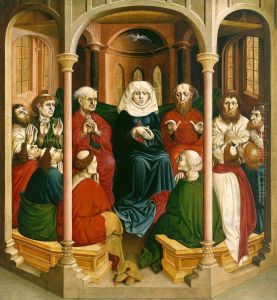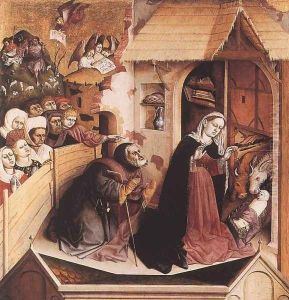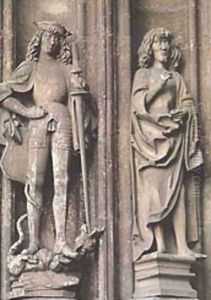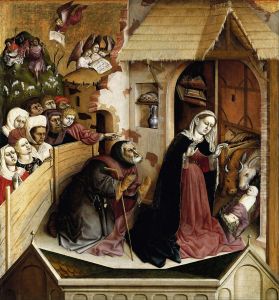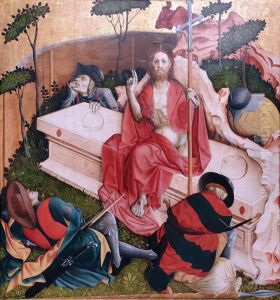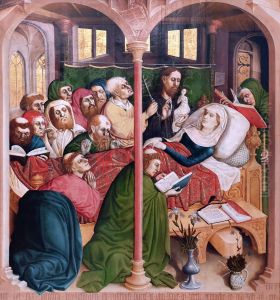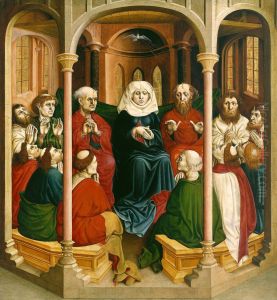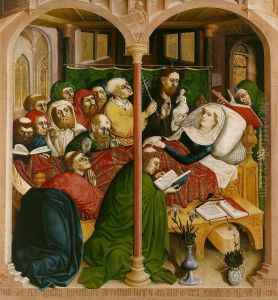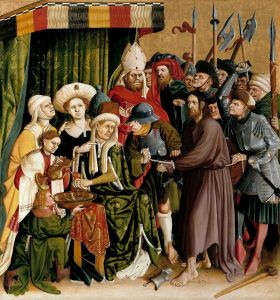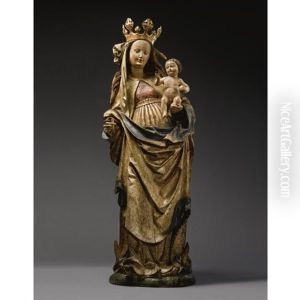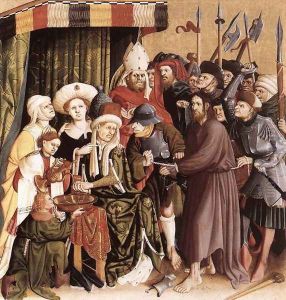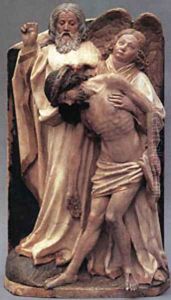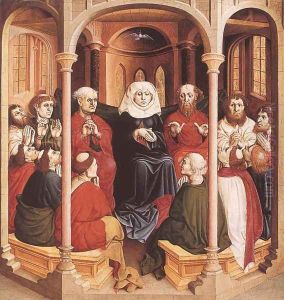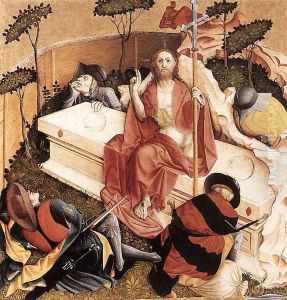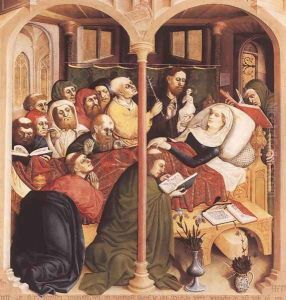Hans Multscher Paintings
Hans Multscher was a German sculptor and painter, born in 1400 in the city of Ulm, which was then part of the Holy Roman Empire. Multscher is considered one of the significant figures in the German Late Gothic art movement. His work is characterized by its detailed realism and emotional intensity, which marked a departure from the more rigid and formal styles of earlier periods. Multscher was not only a master sculptor but also made significant contributions to the field of painting, blending innovative techniques with traditional Gothic elements. Multscher's career began in the early 1420s, and by the mid-15th century, he had established himself as one of the leading artists in southern Germany. His most notable works include the wings of the Wurzach Altar (1437), which showcase his skills in painting, and the sculptural work for the Ulm Minster, demonstrating his mastery in sculpting. These works are celebrated for their intricate detail, expressive figures, and the successful integration of architectural elements. In addition to his artistic achievements, Multscher played a significant role in the development of the Ulm School of Artists, influencing a generation of painters and sculptors in the region. His approach to art, which emphasized naturalism and individual expression, paved the way for the Renaissance movement in northern Europe. Despite the passage of centuries, Multscher’s legacy endures through his contributions to the evolution of European art. He died in 1467 in Ulm, leaving behind a body of work that continues to be studied and admired for its creativity and craftsmanship.
